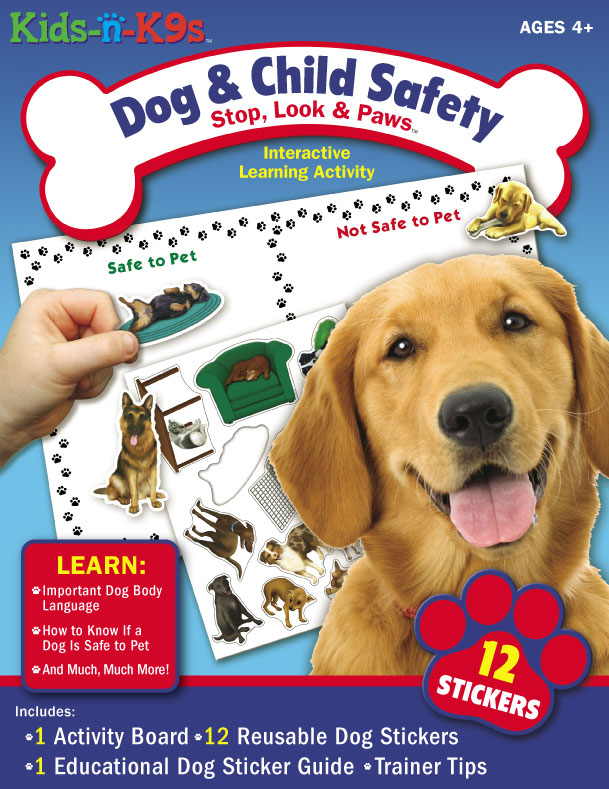Sometimes people think that having a dog to protect their family, and specifically their child, is a good idea. There are draw backs that you should be aware of before pursuing this type of dog or encouraging a dog to take this on this role for the family. Being a companion for a family is a sort of “second career” for dogs compared to what they may have been originally bred to do – herding, hunting, etc. Some breeds have had an easier time switching from working dog to companion animal. Other breeds may look for more work to fill their time!
If you don’t give your dog something to do (long walks, training, ball retrieving, swimming, chew toys) they will often come up with their own job. All they may need is a little encouragement to jump into a role, such as “protector”, but it may be challenging to control how serious they take this new position. The consequences can be detrimental to both the family members and the dog. For instance, if the dog decides that a growl or bark is not effective to remove or control an individual, they may go straight for the bite. Consequences for the owner of the dog can be serious, ranging from medical bills to pay to being sued. For the dog, consequences may be even more serious, as biting incidents can result in a dog being euthanized.
Dogs can naturally come by their “jobs” in the family by chance or when given some intended or unintended direction. An example is when a dog alerts you by barking when someone comes to the door or walks past your house. This is a very innate behavior for most dogs.
Sometimes people start their dog on a new behavior by accident. For example, let’s say you have a new tiny puppy and one day it growls and barks at someone. Everyone giggles and laughs because it looks so cute seeing this adorable puppy acting so tough.
Your unintended response of positive feedback communicates to the puppy that he did a great job. The consequence might be that as the dog matures, he won’t let people come near anyone in the family. It happens! A few examples of this can be when family or friends come to the house for a visit or celebration, such as for a birthday party or holiday, and the dog can not determine whether or not some of these individuals are friend or foe. I’ve known dog owners who could not leave their children with a friendly babysitter in the house without fear of a bite or nip to the sitter from the dog. Of course the dog is just trying to be protective and do their job. Even other children are not exempt from suspicion and can be subject to “corrections” from the dog. Dog owners can become hostage to their own dog and find themselves having to manage their situations by removing the dog to other rooms, crates or kennels, hoping nothing goes wrong when someone visits the home.
Further, if we see a questionable or negative behavior from our dog and don’t disallow it or give guidance, the dog will likely believe it’s an approved behavior. People often hope bad behaviors will just go away, but usually they don’t. In the case of allowing a dog to growl or exhibit some other display of protection towards a stranger who is approaching your child, you may think, “I like this!” However, when given the green light, dogs may have trouble discriminating between good and bad situations.
If you have given them the role to protect your child, whether intended or not, they will have to make decisions on their own. Unfortunately, they may not make good choices. For instance, an old lady with a walker or cane can look as menacing to a dog as an intruder with a weapon. Even after a dog is familiar with specific family or friends, each occasion can be a unique for the dog. For example, Uncle Bob, who the dog knows, comes for a visit with a new baseball bat and glove for his nephew or niece. In this case the dog may see the baseball bat as suspicious, and therefore jumps in to defend the family biting Uncle Bob in the process. Now Uncle Bob doesn’t want to visit unless the dog is contained. You may start to find that other people become reluctant to visit as well. And, now the dog will likely be put in another room or crated every time anyone visits. This will likely make the dog see all visitors as negative, and perpetuate the defensiveness of the dog.
My advice is, don’t go out of your way to encourage your dog to act protectively. If your dog has started this naturally, be sure you do some training with your dog so you can communicate effectively with them to help them understand their role when interacting with people. If you’re unable to provide this leadership with your dog, it’s important that you seek assistance from an experienced trainer who can help you.
Pediatric Safety is a site that is dedicated to helping parents with information to make safe and informed decisions when it comes to their children. I have written several articles and this article was the latest. To see more about this website go to this link.
https://www.pediatricsafety.net/2018/06/do-i-want-my-dog-to-be-protective-of-my-child/




